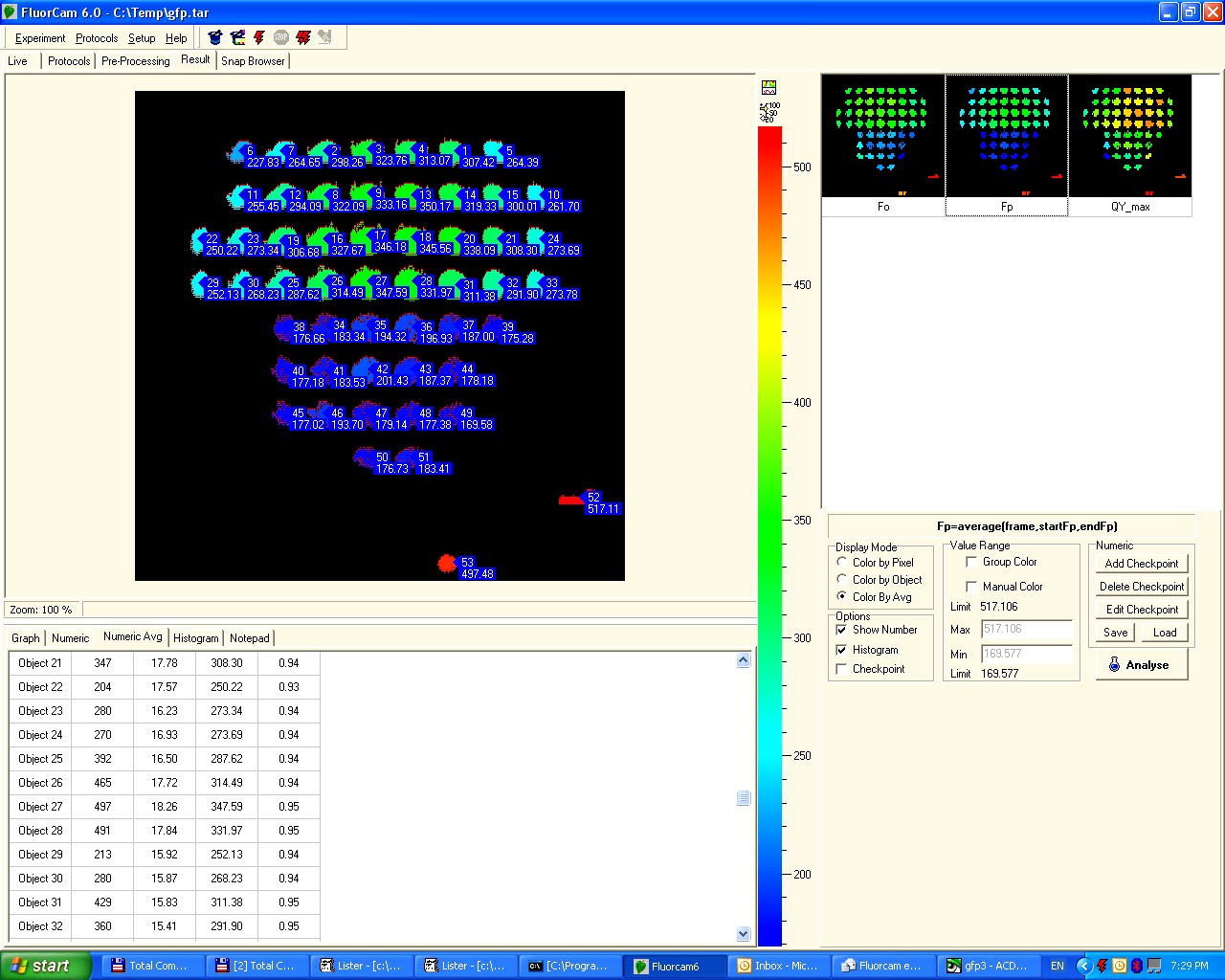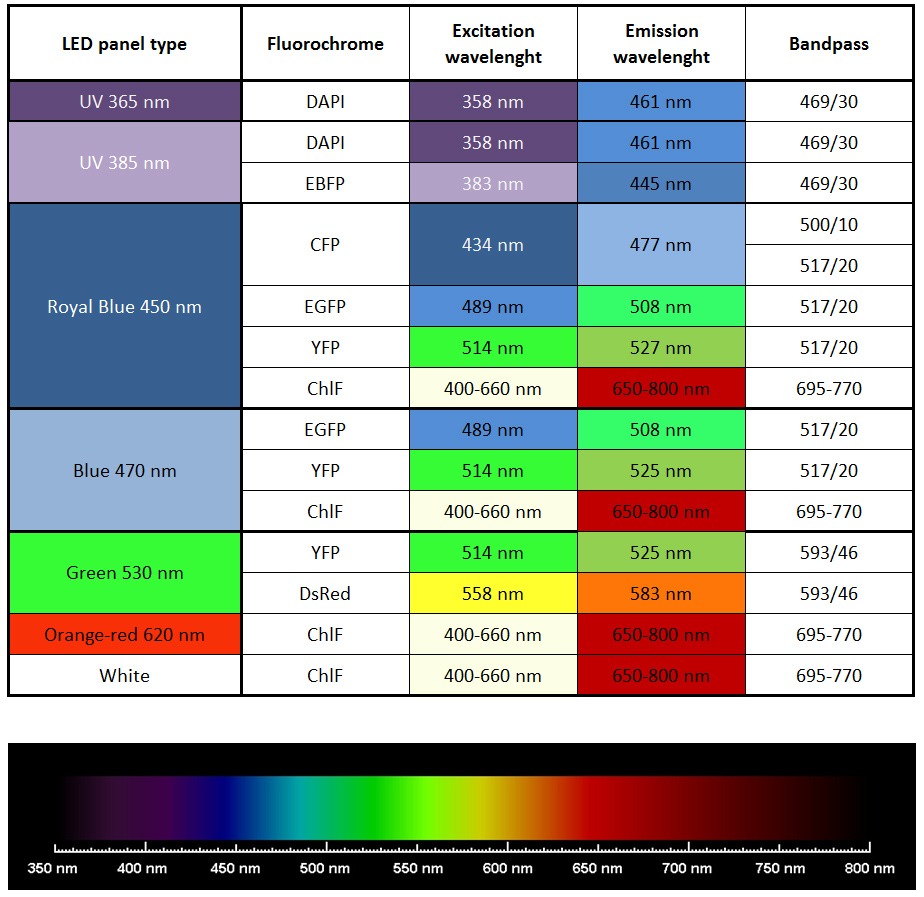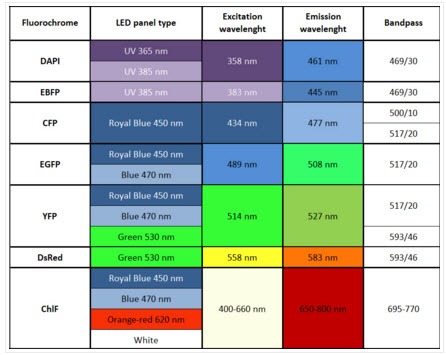
The Z450 Handy GFP Cam is designed for the investigation of both chlorophyll fluroescence or other fluorescent proteins such as green fluorescent protein (GFP) in small plants, leaves, animals, calluses, bacterial or algal colonies. Due to protability of this instrument, studies in both the laboratory and the field are possible. Imaging area is 3.5 x 3.5 cm. This instrument is based on the Z300 Handy FluorCam used for chlorophyll fluorescence imaging only. For imaging of larger areas please see the Z125 GFP FluorCam-Closed.
The Z450 Handy GFP-Cam is typically produced with 620 nm and 455 nm excitation LEDs and 510 nm emission filters. This combination is best suited for the popular EGFP (red-shifted variant).
Measuring Protocols:
- Steady-state GFP fluorescence
- FV/FM
- Kautsky induction
- Quenching analysis
- Light curve
- Combined imaging of GFP and chlorophyll fluorescence
- Both lab and field applications
- Portable and compact (21.5 cm x 13.5 cm x 13.5 cm)
- AC & battery powered
- Coming with a high-end computer and user-friendly software
- High-resolution CCD camera (included)
- Chlorophyll Fluorescence Imaging: Plants and Algae
- GFP Detection and Expression Studies (Plants and Animal Tissues)
- Biotic and Abiotic Stress Resistance in Plants
- Plant Pathogen Research
- Plant Microbe Interaction
- Bacterial – Protozoan Interaction
- Field and laboratory studies
- Chl Fluorescence parameters: (F0, FM, FV, F0’, FM’, FV’, QY(II)), Abs PAR-value, or the parameters that are calculated from fluorescence emission (e.g., NPQ, FV/FM, FV’/FM’, Rfd, qN, qP), PAR-absorptivity, photosynthetic electron transport rate (PS), and others
- Excitation Light Sources: Measuring pulses: orange (620 nm), blue (455 nm), Actinic / saturating light: white – blue (455 nm)
- Saturating Pulse Intensity: Blue: up to 4,900 µmol(photons)/m².s
- Actinic Light Intensity: Blue: approx. 1,400 µmol(photons)/m².s
- Light Regime: Static or sinus form (hub connected)
- Custom-Defined Protocols: Variable timing, special language and scripts
- CCD Detector Wavelength Range: 400 – 1000 nm
- CCD Format: 1360 x 1024 pixels (TOMI-2 camera)
- Pixel Size: 6.45 µm x 6.45 µm (TOMI-2)
- A/D Bit Resolution: 16 bit (65,536 grey levels)
- Spectral Response: QE max at 540 nm (~70 %), 50 % roll-off at 400 nm and 650 nm
- Read-out Noise: Less than 12 electrons RMS – typically only 10 electrons
- Full-Well Capacity: Greater than 70,000 electrons (unbinned)
- Imaging Frequency: Maximum 50 frames per second
- Bios: Upgradeable firmware
- Interface Connector: Gigabit Ethernet
- GFPCam Weight: 1.8 kg
- Leaf-Clip Weight: 0.2 kg
- Power Supply Weight: 2.5 kg
- GFPCam Stand Weight: 1.5 kg
- Notebook Weight (incl. all accessories): 3.5 kg
- Power Input: Max. 200 W
- Electrical: 90 – 260 V
- Leal M.C. et al (2014): Marine Ecology (2014): 1-13, doi: 10.1111/maec.12164
-
ELLAWALA C., ASAEDA T., KAWAMURA K.(2011). Influence of flow turbulence on Chara fibrosa: growth,stress, and tissue carbon content. Journal of Freshwater Ecology. Volume 26, Pages 507– 515. DOI: 10.1080/02705060.2011.595555
-
FERNÁNDEZ-MARÍN B., MÍGUEZ F., BECERRIL J.M., ET AL. (2011). Activation of violaxanthin cycle indarkness is a common response to different abiotic stresses: a case study inPelvetia canaliculata. BMC Plant Biology.Volume 11.DOI:10.1186/1471-2229-11-181
-
MISHRA A., MISHRA.K.B., HÖERMILLE R II., ET AL. (2011). Chlorophyll fluorescence emission as a reporter on cold tolerance in Arabidopsis thaliana accessions. Plant Signaling & Behavior.Volume 6, Pages 301-310. DOI:10.4161/psb.6.2.15278





